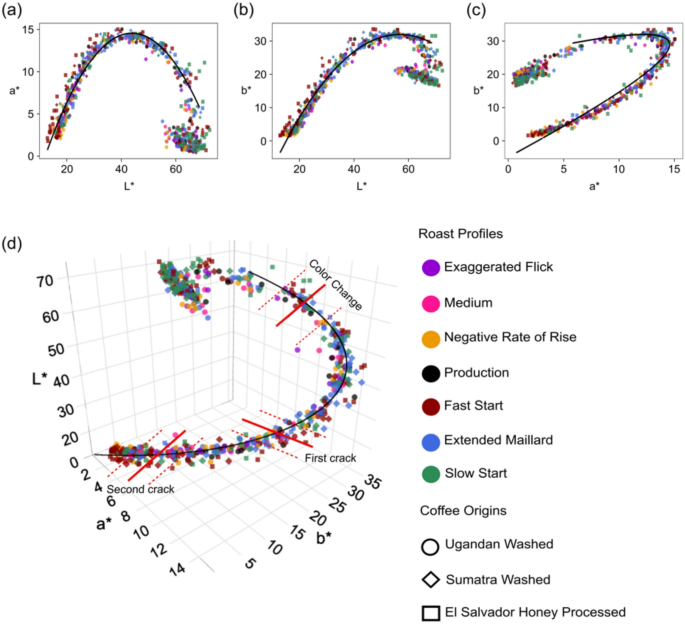New Research Shows Roasted Coffee Beans Follow a ‘Universal Color Curve’
New research from the Coffee Center in the University of California, Davis, College of Engineering is featured in the publications, Daily Coffee News, Global Coffee Report, Phys.org and Sprudge. The articles point to the potentially game-changing nature of the research for establishing industry standards for defining light, medium and dark roasts based on color.

Most coffee drinkers consider labels of “light,” “medium” and “dark” to determine whether they would like to purchase it. These labels are typically perceived by the color of the roasted beans. Even though color is a key indicator of consumer preference, surprisingly, little research has investigated how the temperature and time of roasting coffee affect the color development. Additionally, definitions of “light,” “medium” and “dark” roast levels vary widely from roaster to roaster, often leading to confusion among consumers.
The study, published in Scientific Reports, reveals that regardless of origin and roast profile, coffee bean color always maps onto a “universal color curve” when plotted in the L*a*b* color space. Additionally, the coffee beans consistently exhibited the same color values at significant roast milestones, including color change, first crack and second crack.
The study also shows how the results provide insight into color measurements and how they offer significant implications for the coffee industry by providing a precise, quantitative standard for defining roast levels.